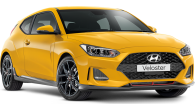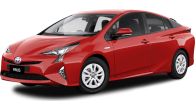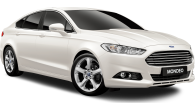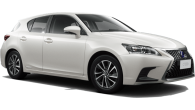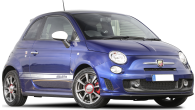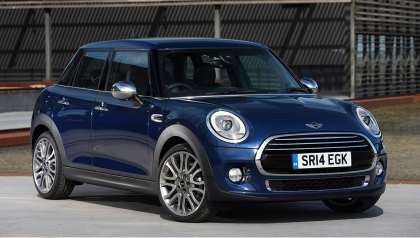Richard Berry road tests and reviews the BMW 1 Series with specs, fuel consumption and verdict at its Australian launch.
BMW’s 1 and 2 Series are like brothers who are so similar but so different. The 1 is a five door hatch, while the 2 is two-door coupe and convertible. One brother is practical and sensible and has a good job at a bank with an excellent chance of getting that promotion to state manager. The other is better looking, flamboyant, lives on a boat and works as a bounty hunter. At Christmas they get together where things always get off to a rocky start but then by midnight they’re both drunk and admitting they’re actually the best friends they’ll ever have.
Well it was like Christmas at BMW’s house recently because the 1 and 2 series were brought together in a ‘double launch’ of the latest updated versions of the models.
With 11 variants between them it would be foolhardy to attempt to cover all the ‘newsness’ and improvements of both models in one review, your mind would explode, or mine would. So we’ve produced two reviews. You’re currently reading the 1 Series review and over here is the 2 Series review.
BMW’s 1 Series is the brand’s most affordable model, but being the brand’s only hatchback it’s a crucial one and outsells its flamboyant brother regularly three times over each month. That’s still not enough to outsell Audi’s A3 Sportback, but it’s hot on the heels of Mercedes-Benz’s A-Class.
The 1 Series was refreshed mid-way through last year with a stack of new features, this update has brought new engines, plus a new king of the range – the M140i, which we drove like we thieved it on a racetrack. We also did time in a selection of other 1 Series cars.
So is the 1 Series still just the practical one? Is it true the M140i can out-torque BMW’s M2 star car? Is the next-gen four cylinder as good as it sounds?
Design
For the 1 Series this update is all about engines and the new 140i big kahuna of the range so there haven’t been any changes to the styling of the 1 Series, besides the exterior design of the car was given a spruce up in June, 2015.
Sure it’s not a sexy as the 2 Series but having four doors makes those back seats far more accessible. That said the combination of a long bonnet and a hatchback has never resulted in a good looking car – take the Ferrari GTC4Lusso, all the money in the world can’t make that car or its name pretty. The same is true for the 1 Series hatch, it’s a bit ugly but like Steve Buscemi it’s still adored by many.
The cockpit is a refined, elegant and premium place – even on this most affordable BMW.
At 4329mm end to end, 1756mm wide, 1421mm tall it’s 103mm shorter than the 2 Series but has the same wheelbase of 2690mm.
The cabin has the traditional BMW layout of a centre console stack that starts with the climate control, then there’s the CD player (yes, a CD player) and above that the air vents and then the display which stands tall like a billboard on a building. It’s a look that’s been around now for nearly 10 years and needs refreshing. But the cockpit is a refined, elegant and premium place – even on this most affordable BMW.
Practicality
A two-door coupe isn’t everything. Anybody that’s had to put a nine-month year old into a child seat in the back of one will tell you that. Or tried to give their older parents a lift to the airport in one and had their mum get caught on her knees stuck and unable to turn around. Or bought a giant mirror online only to smash it trying to wedge it into the boot. Yes, I’ve owned two door coupes before and can verify that backdoors truly are practical.
Boot capacity is 360 litres which is 30 litres less than the Coupe. It sounds like a mistake but sedans more often than not have larger boots than their hatch siblings. What they can’t do is fold down their seats to create a large cavernous space like a hatch which in the case of the 1 Series is 1200 litres.
The 1 Series also seats five – whereas the 2 Series only seats four. At 191cm there’s not quite enough legroom for me to sit behind my driving position – my knees are hard-up against the seat back.
But headroom is excellent back there – far better than the Coupe.
You’ll find two cup holders up front, but none in the back. The front doors have moulded pockets for three bottles, while the pockets in the rear doors are barely big enough to hold a magazine.
Price and features
There are five different variants in the 1 Series range. The line-up kicks off with the $36,900 118i which is a petrol and the diesel 118d for $40,300. Above them is the $41,900 120i and the $48,900 125i.
These prices haven’t moved since the update midway through 2015. The features have stayed the same as well.
The 118i and 118d gett the Sport Line trim, cloth upholstery, climate control, sat nav (the Business spec), reversing camera, rain sensing wipers and BMW’s connected Drive media unit.
The 125i is the big seller of the range and it’s easy to see why.
The 120i adds 17-inch alloy wheels, Driving Assistant, fog lights, Interior lights package, extended climate control and extended phone connectivity.
The 125i is the big seller of the range and it’s easy to see why, apart from the more powerful engine (see section below) it comes with the M Sport Package which includes 18-inch M light alloys, M Sport suspension, M Sport brakes, M leather steering wheel and Alcantara upholstery, there’s also LED headlights, front parking sensors and LED foglights.
At the top of the coupe line-up is the M140i and at $64,900 it gets a $2000 price increase over the M135i it replaces, but there’s $3500 worth of additional equipment. This includes a Harman/Kardon stereo, proximity unlocking, plus power adjustable and heated seats.
Engines and transmission
The biggest changes to the 1 Series are to the engines. That doesn’t go for the 118i and 118d though – the 100kW/200Nm 1.5-litre three cylinder petrol and 110kW/320Nm 2.0-litre four-cylinder diesel remain unchanged.
It’s the 120i and the 125i that get the new-generation 2.0-litre four-cylinder turbo petrol engine. In the 120i it makes 135kW and 270Nm and can send the hatch from 0-100km/h in 7.1s, while in the 125i the same engine is tuned to produce 165kW and 310Nm and does the 0-100km/h sprint in 6.1s. Both are 5kW more powerful than the previous engine.
The power and torque output of the M140i almost matches the BMW’s M2. Actually the torque of the M140i exceeds the M2’s by 35Nm – that’s incredible.
The six-cylinder is in the M140i and it’s a cracker. BMW has moved the turbo and the intercooler, plus its lined the surface of the cylinders to make them slipperier. The result is 10kW more power and 50Nm more torque than the previous engine for 250kW and 500Nm – that’s shaves 0.3s off the 0-100km/h time for a Porsche 911 matching 4.6s.
The power and torque output of the M140i almost matches the BMW’s M2. Actually the torque of the M140i exceeds the M2’s by 35Nm – that’s incredible. The M2 is only 0.3s quicker to 100km/h, too.
All 1 Series cars use an eight-speed automatic which is one of this car’s highlights – it’s super smooth, pretty quick and the bark as you shift up is sweet.
A six-speed manual can also be optioned for no extra cost on the 1240i.
Fuel consumption
The 118i will uses an average of 4.8L/100km during combined driving conditions, while the 118d sips diesel at an average combined 3.8L/100km.
The new-gen four cylinder engines are not just more powerful, they’re more efficient.
The four in the 120i uses an average of 5.8L/100km (down 0.1L/100km) in combined driving conditions, the 125i does 5.9L/100km (down 0.6L/100km) and the M140i drinks at 7.1L/100km (down 0.4L/100km).
Driving
The 1 and 2 series launch was held out of Albury on switchback roads which weaved between NSW and Victoria. We also cut some laps at Winton Raceway. I drove the M140i in auto guise, and also drove the 125i and 120i. BMW hadn’t brought any 118ds or 118is to drive, seeing as they haven’t changed since we steered them last.
While the others were fanging M140is around the track I drove the 120i and 125i back-to-back outside on freeways, country highways and rural roads on the same repeatable loop. Going from the 125i into the 120i you can feel the difference straight away. The 120i floats and bounces over the roads dips and bumps, while the 125i feels magnetised to the road with a firmer grip. It’s all down to suspension – the 125i gets the M Sport suspension which is firmer and endows the car with much better handling.
The 125i’s engine note is deeper and angrier too, with little barks as you blip up through the gears with the shifting paddles. The 125i’s extra grunt is pretty obvious too.
The 125i gets the M Sport steering wheel, but I prefer the feel of the 120i wheel – I find it easier to grip.
On the course-chip surfaces I drove on there was a fair amount of road noise filtering into the 1 Series cabins.
It’s a bit of a sleeper car that looks harmless but the M140i is a wolf in 1 Series clothing that wants to hunt Porsches.
The 1240i is the performance pick. How can you go wrong with a small car stuffed with a big engine? That straight six is wonderful in the way it delivers so smoothly and the way it screams in delight as it does it.
Armed with big brakes, suspension you can set up to be firmer or softer it’s a bit of a sleeper car that looks harmless but the M140i is a wolf in 1 Series clothing that wants to hunt Porsches.
Switching the adaptive suspension to the Comfort setting makes this not just a driver’s car but a daily driver’s car.
On the track I drove the M140i with the eight-speed auto which is perfectly matched to this powerplant. Sport+ mode was selected and I chased a BMW driver instructor in an M4 who outdrove me with both his skill and his car’s ability, but the M140i performed impressively, acceleration out of the corners was particularly good.
Communication between the M140i and the driver is excellent, and the small size and great balance of the car improves the feedback even more so. The track did reveal that you’d have to upgrade to bigger brakes and wider tyres for less brake fade and better grip.
Safety
The BMW 2 Series has a five-star ANCAP rating. That said it’s falling behind in advanced safety technology such as AEB which is standard on much more affordable cars.
In the back row you’ll find two ISOFIX mounts and three top tether mounts for child seats.
Ownership
The 2 Series is covered by a three-year/unlimited kilometre warranty, servicing is condition based.
BMW M140I 2016:
| Engine Type | Turbo 6, 3.0L |
|---|---|
| Fuel Type | Premium Unleaded Petrol |
| Fuel Efficiency | 7.8L/100km (combined) |
| Seating | 5 |
| Price From | $31,020 - $37,400 |
| Safety Rating |
|
Verdict
It’s hard to fault the 1 Series. Not only is it the most affordable BMW, that’s even better value for money following the revision in 2015, it’s a practical alternative to the 2 Series that loses nothing when it comes to the performance variants which are stunningly capable. We’d like to see the 1 Series made even better by the addition of more advanced safety technology.


















